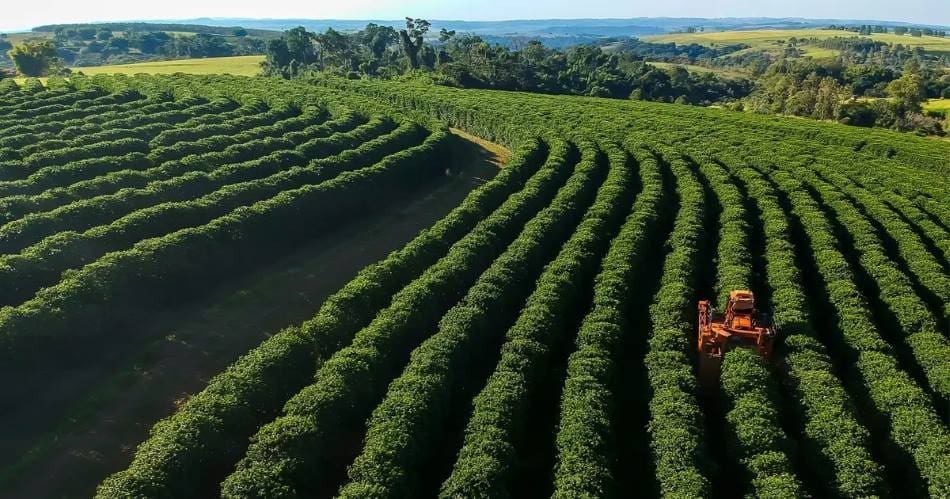Summary:
A study published in Environmental Research Letters warns that even advanced climate intervention methods may not be enough to secure the future of coffee, cacao and wine grapes. These so-called “luxury crops” underpin major economies and livelihoods worldwide, yet they are increasingly vulnerable to climate change. Rising temperatures and shifting rainfall patterns threaten to make yields unpredictable, with serious consequences for farmers and global markets.
The research team examined the potential of Stratospheric Aerosol Injection (SAI) – a proposed geoengineering technique that would release reflective particles into the stratosphere to cool the planet. Using climate simulations from 2036 to 2045 across 18 major growing regions in Europe, South America and West Africa, the study compared SAI scenarios with a world without intervention. While SAI did succeed in lowering temperatures, it did not consistently preserve the climatic conditions needed for stable cultivation. Only six of the 18 regions showed improvement in all model runs.
According to co-author Dr Ariel Morrison: “Reducing temperature with SAI alone isn’t enough.” The study concludes that local adaptation, investment in resilient practices and global cooperation remain critical to protect the crops – and the communities – that depend on them.

Climate intervention may not be enough to save coffee, chocolate and wine, new study finds
A new study reveals that even advanced climate intervention strategies may not be enough to secure the future of wine grapes, coffee and cacao. These crops are vital to many economies and provide livelihoods for farmers worldwide. However, they are increasingly vulnerable to the effects of climate change. Rising temperatures and changing rainfall patterns cause big variations in crop yields from year to year, meaning that farmers cannot rely on the stability of their harvest, and their produce is at risk.
The researchers specifically investigated Stratospheric Aerosol Injection (SAI) as a way of mitigating climate change in the top grape, coffee and cacao growing regions of western Europe, South America and West Africa. SAI is a hypothetical solar geoengineering method that involves releasing reflective particles into the stratosphere to cool the Earth’s surface, mimicking the natural cooling effects of volcanic eruptions.
Researchers examined whether SAI could help stabilize growing conditions for the crops between 2036 and 2045. Using climate simulations across 18 key regions, they assessed crop suitability based on temperature, rainfall, humidity, and disease risk. While SAI did reduce surface temperatures, it failed to consistently preserve the conditions needed for successful cultivation of these crops. Only six out of 18 regions showed reliable improvement under SAI scenarios compared to a scenario without SAI.
The study found that unpredictable rainfall and humidity played a major role in undermining SAI’s effectiveness. Although SAI could bring down temperatures, it may not reliably manage floods and humidity, leading to inconsistent outcomes in crop yield and projected revenue.
“Reducing temperature with SAI alone isn’t enough,” said co-author Dr Ariel Morrison. “For instance, cacao species, while more tolerant of hot temperatures than coffee and grapes, are highly susceptible to pests and diseases caused by a combination of high temperatures, rainfall, and humidity. Natural climate variability also cannot be ignored – it leads to a wide range of outcomes under the same SAI scenario that could affect the livelihoods of farmers growing cacao, coffee, and grapes.”
”SAI climate intervention may offer temporary relief from rising temperatures in some regions, but it is not a guaranteed fix for the challenges facing luxury crop farming. Adaptation strategies tailored to local conditions, investment in resilient agricultural practices, and global cooperation are essential to saving these crops and the communities that depend on them,” adds Dr Morrison.
Journal Reference:
Ariel L Morrison, Elizabeth A Barnes, James W Hurrell and Daniel M Hueholt, ‘Macroclimate growing conditions for luxury crops after stratospheric aerosol injection’, Environmental Research Letters 20, 11, 114063 (2025). DOI: 10.1088/1748-9326/adfbff
Article Source:
Press Release/Material by IOP Publishing
Featured image credit: IOP Publishing | CC BY




